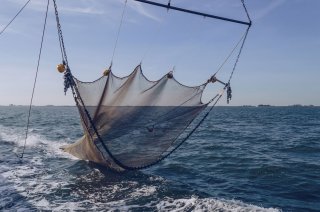
category_news
Impact of bottom fishing on seabed carbon more complicated than previously thought
A new study led by marine biologist Justin Tiano of Wageningen Marine Research, together with a team of international scientists, uncovers the complex relationship between bottom-trawling fisheries and the dynamics of organic carbon on the seabed. These findings, published in the prestigious journal Fish and Fisheries, offer important insights for developing tailored fisheries management approaches.
When the seabed is churned up, organic carbon is exposed and can react with oxygen. This reaction forms new substances, including carbon dioxide (CO2), a major greenhouse gas. The increase in CO2 contributes to a reduction in the global greenhouse buffer and causes sea water to become more acidic.
Variable impact of trawling on organic carbon and ecosystems
By analysing global data, the researchers found that the impact of trawling on seabed organic carbon dynamics varies greatly depending on local conditions. Although the total amount of organic carbon storage was only slightly affected in some areas, the study showed a significant decrease in fresh organic matter, such as algae, on the seabed after bottom fishing. This results in a reduction of food for benthic animals, which in turn affects other marine animals. The study highlights the need for tailored management strategies, to address the diverse impacts of trawling on different marine ecosystems.
Nuance is needed for effective marine environmental policy
The science on the effects of bottom fishing on carbon and biogeochemistry is still relatively unclear. "The global debate lacks nuance, it is important to understand that the effects of trawling on carbon are not the same everywhere," said Justin Tiano. "Our new results show that reductions in total organic carbon from trawling depend on specific conditions. Policymakers and managers must take this into account if they want to effectively protect seabed carbon."
Focus on local hydrodynamics and primary productivity
According to Justin Tiano, the study provides crucial insights for policymakers and scientists investigating the impact of bottom trawling on climate change and marine ecosystems. It highlights the importance of local hydrodynamics and primary productivity in developing effective marine management strategies.
Weak currents and soft sediments: most vulnerable to CO2 emissions
Areas with weak currents and soft sediments were found to be most vulnerable to the effects of trawling on seabed carbon sequestration. This finding highlights the need for targeted protection measures in these vulnerable regions.
Risk of underestimating effects by sampling technique
Traditional sampling techniques, such as grabs, may underestimate the true impact of trawling on biogeochemistry. The study highlights the need for more accurate methods to get a full picture of the impacts.